Recycling of fabric is the process whereby old clothing and other textiles are recovered for reuse or recovery of the fabric. Upcycling or repurposing can all add another bit of life to your garments before finally saying goodbye to them. Recycling of fabric could then be the final step.
Why should we look at Recycling of Fabric?
With the modern consumer mindset of buy, use and discard, millions of kilograms of garments and textiles are being thrown away each year. 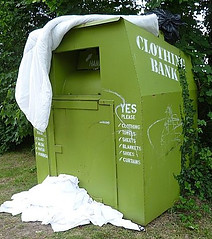 This makes the fashion industry the second largest polluting industry after oil. It does make one wonder about the clothes we all buy and what happens to them when we no longer want or need it.
This makes the fashion industry the second largest polluting industry after oil. It does make one wonder about the clothes we all buy and what happens to them when we no longer want or need it.
Although most fabrics can be recycled, approximately 85 percent of clothing end up in landfill sites in the USA alone. Existing clothing and industrial textile waste can both be used to form the base for creating new fashions.
Sources for recycling of fabric are either pre-consumer or post consumer. Pre-consumer are scraps and other waste that are by-products of the manufacturing process whereas post consumer are garments, upholstery and other household textiles that are no longer required.
What is Fabric Recycling?
Recycling of fabric is looking at old garments and how the individual components can be reused. Technology for fabric recycling have been developed that breaks down natural and synthetic fabrics to the molecular level. This means not only can the fibers be used for new fabrics, but also forming building materials like floor and wall panels. Once the fibers have been broken down to micro elements, it can be brought back to life and used in a range of products.
Commercial recycling of fabric normally involves breaking down textiles into a form where they can be spun back into yarn. Natural and synthetic fibers undergo slightly different processes. 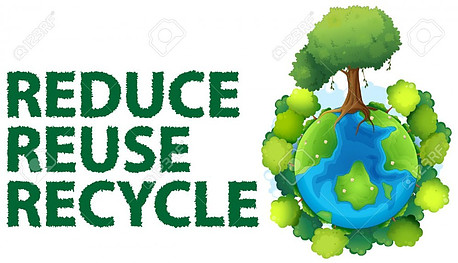 Natural textiles:
Natural textiles:
- When it comes to natural fibers like wool, linen and cotton, the textiles are sorted by colour and fiber type. If it is first sorted by colour, it means that the fabric does not need to be dyed again. This saves energy and also avoids pollutants.
- The fabric is then shredded or pulled into fibers. Depending on the end use, other fibers are sometimes introduced and blended into the yarn.
- The yarn is cleaned and then carded and combed to mix it.
- It is then spun into yarn that can be knitted or woven into cloth again.
- The end result is a lower quality than when virgin materials are used, as the fibers are shorter and the fabric doesn’t have as fine a texture.
- Instead of spinning and weaving, some fibers are compressed to be used as fillings in mattresses and upholstered furniture.
Synthetic or polyester based textiles:
Synthetic fibers like nylon, acrylic and polyester undergo a different process.
- The garments or fabric are shredded and then granulated for processing into plastic pellets called nurdles.
- Pellets undergo a few processes and are then melted and extruded to create new yarn.
- The new yarn is then woven or knitted into new fabrics.
Recycling blended fabrics poses a challenge as different processes are involved for natural fibers and synthetic fibers.
From plastic bottles to fabric – is clothing possible?
Clothing is certainly possible and these are brands that use recycled plastic to produce clothes and also sneakers and trainers. Recycled plastic products have many uses and sustainable fabric can be made from recycled plastic bottles.
Plastic bottles and polyester thread are made from the same synthetic substance namely polyethylene terephthalate or PET.
The process that uses waste to produce textiles, goes from bottles to flakes to pellets to yarn and then fabric.
- Plastic bottles are collected and sorted by type and colour as only clear PET bottles are used for producing fabric. At the recycling plant the bottles are washed and caustic soda is used to remove the labels. The bottles are then dried.
- Flakes are made by shredding the bottles and cutting them into small pieces. The flakes are washed at a high temperature and dried in hot air. Caps are made from a different plastic and needs to be separated from the shredded bottles. This is done by putting them in water as the bottles will sink and the caps will float.
- The flakes are then melted and molded to form pellets.
- The pellets are melted again and extruded or pushed through small holes to become yarn.
- Yarn can then be spun into fiber and woven into fabrics.
100% recycled polyester fabrics are made from high twisted filament yarns with a high number of fibers. It is being used to produce anything from sportswear to work wear to bags and many more. Traditional polyester yarn can be replaced by recycled plastic yarn to produce fabric for clothing and accessories.
Benefits of Recycling Fabric
- The use of virgin fibers can be avoided.
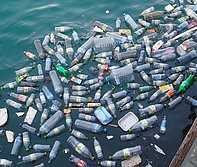
- Recycling of fabric decreases the requirement for landfill space. Synthetic fibers don’t bio-degrade and natural fibers might give off greenhouse gasses.
- The consumption of water and energy can be reduced by recycling textiles.
- There is a lower demand for colorants and dyes.
- Avoidance of and less pollution when recycling textiles.
What is upcycling and repurposing?
Upcycling garments or upcycled clothing is also known as creative reuse and repurposed clothing. Upcycling is environmentally friendly, not just helping the environment but also has economic benefits.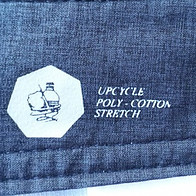
Transforming unwanted or useless products or waste materials into new products and fabrics can give fibers a new life. It is a great way to spruce up old or worn-out or damaged garments into new pieces. Also, new clothes that no longer fit or looks dated, can get a new life by upcycling.
Upcycling is the opposite to down cycling and has better environmental values. Upcycling and recycling of fabric can contribute to living a more sustainable life with fewer garments being thrown away.
A new life for garments through Upcycling and Recycling of fabric
There are numerous possibilities for different items or products that can be made from pre-used garments or recycled fabrics. These range from: 
- Quilts or blankets – patchwork is a great way of using small pieces of fabric
- Multipurpose bags – from shopping bags to beach bags to general storage, the possibilities are endless.
- New clothes
- Rag rugs – use any old garments from t-shirts to sheets to shirts to skirts to weave or crochet rugs.
- Place mats and napkins – old linen can be used or shirts or dresses.
- Pillow covers – ideal to be made from old sheets or duvets covers.
- Footwear – sneakers and trainers from recycled plastic bottles.
Composition of Recycled Fabric
Recycled yarns can have different compositions and can consist of a hundred percent natural fibers, 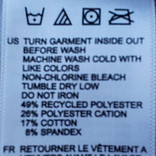 a combination of natural fibers and synthetic fibers or a hundred percent man made fibers. It can then be used to create:
a combination of natural fibers and synthetic fibers or a hundred percent man made fibers. It can then be used to create:
- A combination of recycled fabric and new fibers.
- 100 percent recycled plastic bottles.
- A hybrid of fabric waste and recycled plastic bottles.
- A hybrid of recycled fabric and recycled plastic bottles.
Is there a future for Recycling of Fabric?
With the advance of new technology in the recycling of fabric, the anticipation is that the recycling industry will grow.
Surf companies and manufacturers of outdoor clothing is paving the way with clothes that 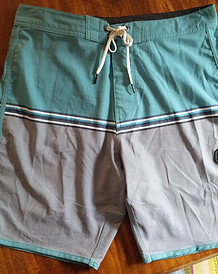 are being made from recycled plastic. Companies are turning to recycled materials to reduce their impact on the environment. I certainly think there is a huge potential for fabric recycling.
are being made from recycled plastic. Companies are turning to recycled materials to reduce their impact on the environment. I certainly think there is a huge potential for fabric recycling.
At the moment the cost of using recycled fabric in clothing is about ten percent higher than using virgin materials. The ideal would be to make recycling of fabric a priority in the textile industry, that less virgin materials need to be manufactured. Sustainable manufacturing solutions are the only way to save our planet and our future.
These are all brands that are using recycled materials in their garments and footwear. You can reduce your environmental footprint and support these brands that are looking after your planet.
- Allbirds produce sustainable footwear and apparel using only natural, sustainable fabrics and recycled materials.
- Thought is an all-natural company that produces timeless fashion using organic cotton and sustainable fabrics.
- Laara Swim, a Danish company, is one of the 100% sustainable designer bikinis brands. They use fabric made from regenerated plastic waste that is found in the North sea, Adriatic sea and Mediterranean.
- Vitamin A produces sustainably made swimwear and leisure wear clothing using recycled nylon and natural fibers.
- Nudie Jeans is an environmentally conscious Swedish fashion brand that uses organic cotton to produce sustainable denim jeans.
- Beaumont Organics is a British based Organic and Ethical clothing company that was started in 2008. They create contemporary conscious clothing for the modern woman.
- Soul Flower is an Organic Boho Hippy Clothing Range that is based in Minneapolis, USA. You can respect our planet while at the same time expressing your bohemian spirit.
- PrAna is an ethical North American company that only uses sustainable fabrics and ethical practises. They do a full range of yoga, climbing, hiking, travelling and active wear for men and women.
I look forward to hearing your ideas and comments. Please leave them below and I will get back to you.
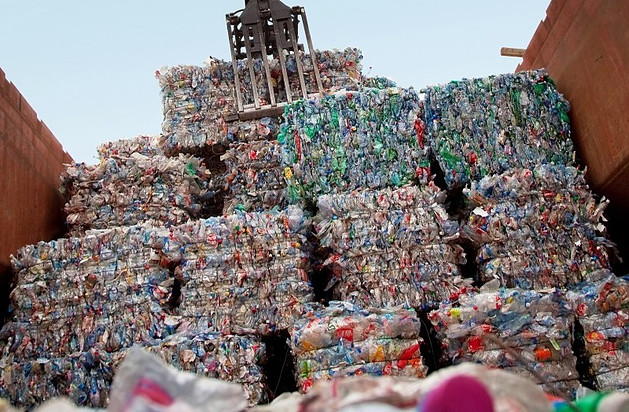

I would have never thought that you could end up with fabric from plastic. I just started seeing fabric recycling bins around town and was going to take my no longer wanted clothes to the Salvation Army. It is still closed from the corona virus, so stumbled upon a fabric recycling bin, and dumped it all in there. Now I know what is done with the donations you put in there. I really wasn’t sure.
Hi, Recycling and upcycling of fabric is a great way to reuse garments and give it another life. Charity shops like the Salvation Army is good for taking clothes that you no longer need, but it all gets to a point that it can no longer be used as clothes, and then it can be completely recycled. Awesome that you have clothing recycling bins in your area and you could use it. All the best, Liné
Clothing recycling to me is a welcome practice that can contribute to the low level of deforestation which can have negative impact on our environment. This can also reduce landfill, air and water pollution with fabrics. But in my opinion, when it comes to recycling stuff, not many companies can hold it very well, some might gather more than enough material which can later find their ways flying around on the environment causing more pollutants. Most product are not always effective.In a nutshell, I think fabric recycling has more advantages more than disadvantages.
I agree Stella that some companies do not do recycling as well as we would like to see it, but they can only improve
Hi
Great Article about recycling fabric, With the advent of modern “fast fashion” people are changing their clothing styles quite quickly these days. The fact that it is the biggest polluter behind oil is scary.
Recycling these days is the only way to go and just makes sense, it would be good to see the big clothing manufacturers getting behind this and providing facilities for people to return their clothes and providing more recycling facilities. You said that 85% of clothing ends up in landfills in the US, is that similar in other western countries or is there somewhere that is doing a good job at this already?
Look out for a future post on fabric recycling where I hope to expand more on what is being done around the globe
Liné,
This is awesome! I never even thought about recycling my old clothes and such. I like to donate still usable items to thrift stores, but the unusable stuff I tend to save for cleaning rags in my garage. I have too many rags so I have been thinking about throwing some away. Now, I would like to recycle them instead. I have tried to find somewhere that will recycle fabrics near me but I haven’t been able to find anything. Can you recommend what to search for or a directory of fabric recyclers? I would really appreciate this as I would rather recycle something than throw it in the trash.
Thank you so much for opening my eyes about this.
Mark
I’m not sure where you live Mark but look out for recycling bins in your area. Great that you are able to use some fabric in your garage. I also tend to use old towels and sheets for my dogs and donate to the dog shelter near me
Liné, you are amazing! I never thought about animal shelters as a place to recycle sheets and towels. I have a really nice shelter less than a mile away from me. I will get in touch with them and see what they can use. I have never noticed any fabric recycling bins around me but I will be keeping an eye out for those as well.
Thank you again!
Mark
Old T-shirts and sweatshirts are also great for dogs (or cats) although I tend to use those for cleaning and give the old towels and sheets to the dogs
This is a brilliant idea and one that has been needed for a long time. Whenever I get to a lake or an ocean what I see is sickening when it comes to plastic everywhere. It is choking and killing the fish and on land, it is as bad. Recycling the materials into clothing and into high fashion clothing items makes so much sense.
It seems that the processes have been well worked out and that there is a market for recycled materials. Now if we can get acceptance by all parties to the train from the recycling points to the stores where the finished clothing items are sold it will make a huge difference.
I do think that this is an idea that will catch on more and more in the developed world as people become aware of the impact that the massive piles of plastic and the impact on the fish and marine life that the plastic is having. Who knows how much of that plastic we are ingesting through the fish that we are eating…
So I guess you could say that I am a strong supporter of this idea and would like to see it adopted globally for the good of the earth and the good of the people and animals that all have to get along and survive on this earth!
I fully agree with you Dave and more manufacturers are realising that sustainable products need to be part of their chain